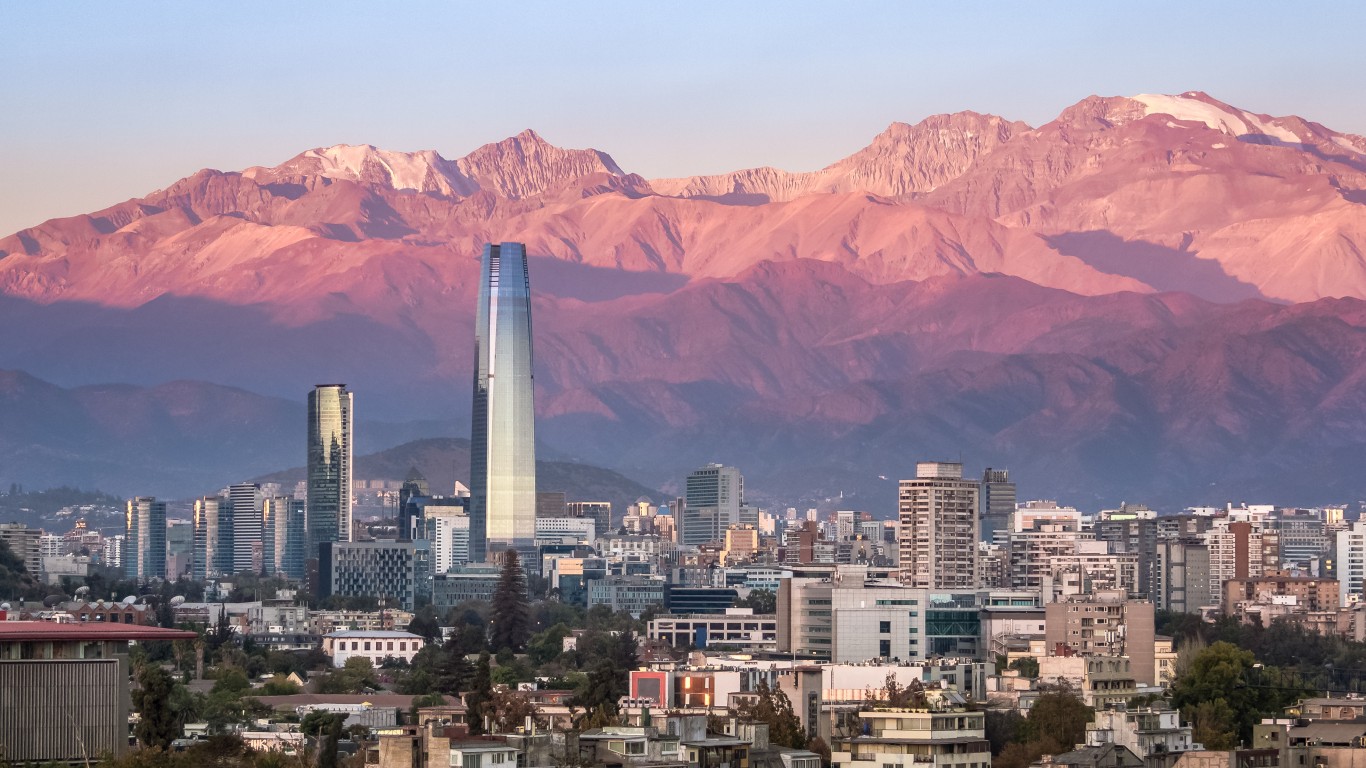
15. Los Angeles, California, USA
> Total emissions in 2013: 29.02 million tons of CO2 equivalent
> Transport, industrial, waste, and local power plants: 19.60 million tons of CO2 equivalent — #11 most in study
> Grid-supplied energy produced outside the city boundary: 9.43 million tons of CO2 equivalent — #18 most in study
> Population in 2013: 3.8 million
Suffering in alarming measure from wildfires, drought, and water shortages, California has a history of facing environmental challenges, including climate change. Despite its perennially high CO2 emissions rates, it has been heroic in its decades of work to curb automobile emissions. Currently, its most populous city has many programs to reduce emissions, including pumping billions of dollars into its public transit systems and incentivizing changes in individual behavior.

14. Lagos, Nigeria
> Total emissions in 2014: 29.43 million tons of CO2 equivalent
> Transport, industrial, waste, and local power plants: 29.43 million tons of CO2 equivalent — #5 most in study
> Grid-supplied energy produced outside the city boundary: N/A
> Population in 2014: 11.9 million
Africa’s largest city is congested and becoming more so, even as the streets flood regularly from torrential rains, exacerbated by an eroding coastline. Temperatures and sea level are on rise, threatening public health and the city’s very existence. For its part in reducing CO2 emissions, Lagos just announced a new five year climate plan, which touts the successes of previous plans: improved intermodal transport, tree planting projects, and some replacement of more polluting fuels with natural gas.

13. Las Vegas, Nevada, USA
> Total emissions in 2014: 29.66 million tons of CO2 equivalent
> Transport, industrial, waste, and local power plants: 11.00 million tons of CO2 equivalent — #24 most in study
> Grid-supplied energy produced outside the city boundary: 18.65 million tons of CO2 equivalent — #4 most in study
> Population in 2014: 597,000
With the possibility of Nevada’s temperatures rising 10 degrees this century, drying up its water supplies, the state issued a climate strategy report last December, the centerpiece of which is a plan to end gas consumption in buildings. The governor effectively admitted to the state’s formerly lax attitude toward climate, saying that “for the first time in Nevada’s history, we are doubling down to address climate change head-on.”

12. Chicago, Illinois, USA
> Total emissions in 2015: 29.92 million tons of CO2 equivalent
> Transport, industrial, waste, and local power plants: 16.95 million tons of CO2 equivalent — #13 most in study
> Grid-supplied energy produced outside the city boundary: 12.97 million tons of CO2 equivalent — #11 most in study
> Population in 2015: 2.7 million
Chicago has been working with local, regional, national, and international partners in producing a strategy, crafted with its regional metropolitan mayors and the help of NOAA, to reduce CO2 emissions by 80% by 2050. NOAA sees the plan, released this past summer, as a model of multijurisdictional cooperation, involving as it did, not only government agencies, but stakeholders from academia, communities, industry, and the nonprofit sector.

11. Santiago, Chile
> Total emissions in 2013: 31.43 million tons of CO2 equivalent
> Transport, industrial, waste, and local power plants: 23.12 million tons of CO2 equivalent — #8 most in study
> Grid-supplied energy produced outside the city boundary: 8.31 million tons of CO2 equivalent — #22 most in study
> Population in 2013: 5.1 million
Viewing the climate crisis as inextricable from other social and economic ills, Chile updated its climate action plan in the middle of the pandemic, making climate action part of its plan for economic recovery. Chile is also determined to address climate in ways that will provide water security, gender equality, and poverty alleviation.






